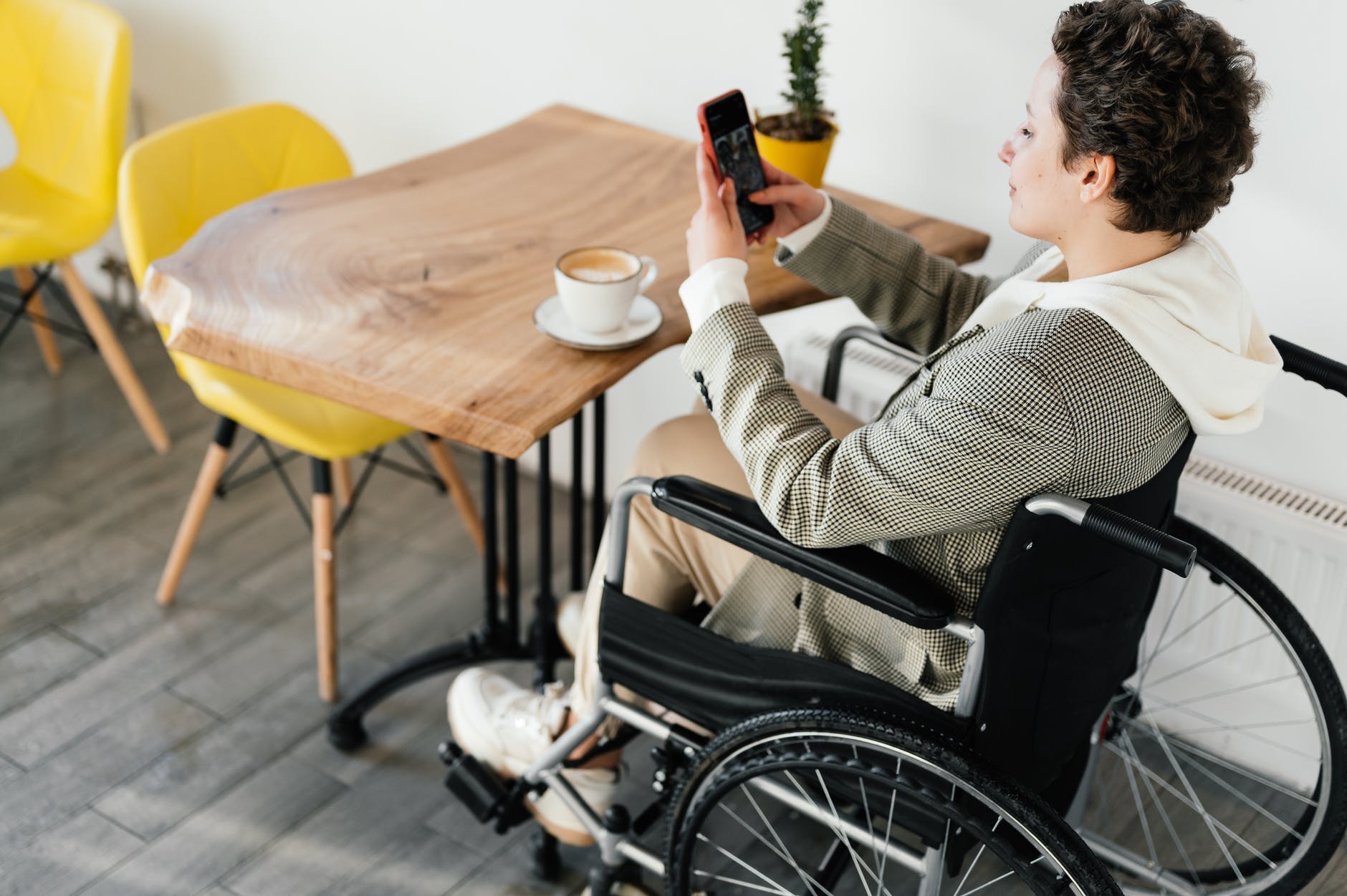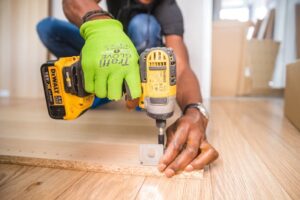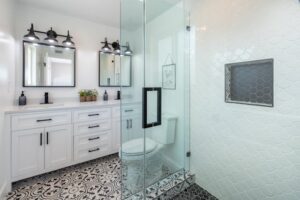
Photo by SHVETS production on <a href="https://www.pexels.com/photo/disabled-woman-taking-photo-of-coffee-in-cafe-6980170/" rel="nofollow">Pexels.com</a>
The elderly, those with health problems, the disabled can keep thousands of people confined to their homes. Sometimes even limited to one or two rooms. Spending so many hours in our homes multiplies the chances of suffering a domestic accident, especially for older people, such as a fall. Many live alone and cannot receive visits from family and loved ones as often as needed. So what can be done to help? Thankfully, there is a lot. From stairlifts to home elevators and added security, you can find a way, even in a home with unusual architecture. Yes, a curved stair lift for example can be one of them! So, how else can you make a home safe and secure? Let’s look at how.
Access
Avoid unevenness and projections by using vertical lifts or stair lifts, inclined stair lift platforms, ramps or single-family lifts. In the case of stairs, handrails should always be used. Placing the room of the elderly or disabled person on the ground floor if there are several floors can be an alternative, but it limits the enjoyment and mobility of the person in their environment. Automate the opening of doors and ensure that they are at least 80 centimeters wide. Eliminate barriers or obstacles to easily move from one room to another. You want to keep the space open and have nothing that will impact the safety of the home.
Beds
Beds of medium height and without being glued to the wall. For situations of a high degree of dependency, an articulated bed is needed to facilitate the change of positions. Air mattresses prevent pain and ulcers.
Living room
Seats with armrests and high backs so that it is not difficult to get in and out. Armchairs are usually a better option and not sofas. It is also a good idea to have a footrest and a reclining backrest.
Photo: Unsplash
Immediate accessibility solutions for seniors
Perhaps of all the architectural barriers that we can find in a home, stairs and places or rooms at different levels are the most frequent and the ones that cause the greatest inaccessibility and dangerous situations. For this type of architectural barrier, there are different solutions ranging from a simple stairlift to an elevator.
Stairlifts are elements that help us mobility quickly and without issue, but that can only be used by people who retain a certain degree of mobility. This is because they can not transport a person with their wheelchair.
The vertical lift: These are universal options, comfortable, safe and designed for everyone, with many possibilities for customization. Generally they require a simple preliminary adaptation work and their limitation is in 2 stops and a maximum of 3 meters of travel.
Finally, the most universal or comprehensive solution in the elimination of architectural barriers is a single-family elevator or domestic elevator. They are lifts with reduced speed and constant pulsation, the use of which has no restrictions, being valid for all members of the house. They require adaptation works very similar to vertical elevators, and have no stop or route limitations. But you do not have to live in fear or worry about others living in fear either.
The bathroom
It is a room in the house that we visit every day, so its adaptation to the disabled person is significant. The first thing we should do is, if we have a bathtub at home, change it for a shower tray. The installation of grab bars and support points is essential, especially next to the toilet and the shower. As for the sink, it must be at the correct height and without any element that prevents the wheelchair from approaching it. Non- slip surfaces also come in handy to avoid accidents, so opting for materials of this type would be correct, especially for the floor.
Living spaces
Something very important and that improves comfort and accessibility, are sliding doors. They can be manual or use a device through which the disabled person can open and close the door whenever they need it. In relation to the height of the windows, the correct one is 140 cm maximum. It is a fact that must be taken into account to facilitate their stay in each and every one of the rooms. Once you make a space comfortable and secure, you can most certainly enjoy a life without fear or worry. Your home should be your haven, therefore it is vital that you keep it safe and secure, because disabilities should not hold you back at home.


